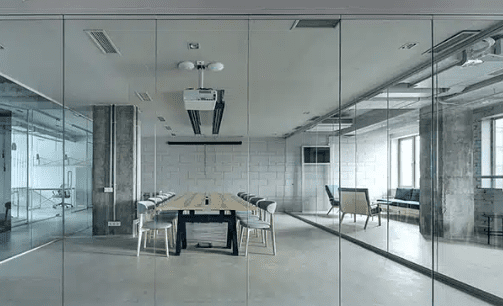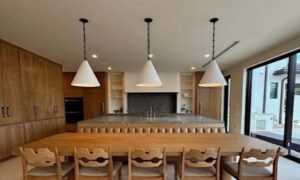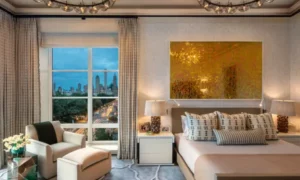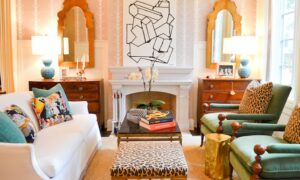Glass has been used decoratively and architecturally around the world for thousands of years. Developments in structural glazing technology have made this one of the most well-known uses in the last century, but there are many ways to use glass in building design – including interiors.
Innovations in glass manufacturing mean this material has almost countless options for transforming living and working spaces, inside and out. Glazing of all kinds provides an ideal element to pair with endless other materials and design schemes for both practical and aesthetic benefits.
You might be thinking that sure, glass is trendy, but will it stand the test of time? What makes glass a fundamental choice for beautiful interiors? This blog explains the major advantages of using glass in interior design, and how you can use it to rejuvenate your home or workspace.
Natural light
Transparency is one of the greatest benefits of glass, because it lets light flow through it. Lighting is one of the most important aspects of good interior design, and one of the best forms is natural sunlight – so what better way to maximise natural light than by using glass?
Of course, there are various tinted glass and frosted glass options that can increase privacy, but even translucent glass still allows a greater flow of light from the outside through interior spaces. Natural daylight makes any room feel brighter and sets a happier mood.
This is especially important for our well-being, as insufficient exposure to natural light can have an adverse effect on our physical and mental health – as seen with conditions like Seasonal Affective Disorder (SAD). It’s important to have as much natural light as possible flooding practical spaces that we spend the most time using every day, such as kitchens, bathrooms, and offices.
Not only can naturally lit spaces make the people using them feel happier and healthier, but natural light can also affect their perception of interior colour schemes. Sunlight is the preferred lighting source for viewing ‘true colours’ – which can otherwise appear washed out or murkier in artificial lighting that’s too bright or too dim.
Inspiring surroundings
In addition to allowing the changing play of natural light patterns throughout the day, glass creates a link between the outside world and the inside. Glass walls, doors, and partitions can form a seamless flow between different areas, which is perfect for contemporary living trends like outdoor living rooms or backyard kitchens.
The more transparent the barriers between your living or working space and nature, such as the sky and outdoor landscapes, the more relaxing and calm the environment will feel – and the more content you are, the more productive you’re likely to be, too.
Since glass works well with most other materials as a neutral base, it’s the ideal accompaniment for biophilic design. Many designers are prioritising this architectural concept, which aims to make the built environment more connected to nature to improve well-being, through better access to natural light, ventilation, and organic materials.
Whether they’re real or fake, combining plants and flowers with glass allows for the ideal mix of light diffusion and greenery, allowing colours to appear brighter and creating a more welcoming atmosphere for everyone.
Spacious aesthetics
Yet another benefit of glass as a transparent material that emphasises light flow is its ability to make smaller spaces feel much larger than they really are. Nobody wants to feel cooped up in a dingy little room every day – a feeling that an abundance of heavy, opaque materials and an over-reliance on artificial lighting will only re-enforce.
Meanwhile, glass supports a clean and modern aesthetic, providing a visually stimulating yet uncluttered vibe that doesn’t overpower the senses. Much like using mirrored glass to reflect light, it creates an optical illusion of there being more open space around you.
This doesn’t mean that glass is just a bland backdrop to your interior design, though. The glass itself can be an impressive visual feature, depending on which type you choose and how it’s installed, as well as how you style the surroundings to enhance it.
Most people will agree that glass feels modern and sophisticated, inspiring an elegant first impression for anyone who enters the property. The more decorative the glass feature is, the more visual interest it can create – shapes and patterns can make glass just as artistic as it is architectural.
Durable functions
Some people might believe that glass is purely decorative, as it’s perceived to be a fragile material. This isn’t true of toughened glass, which is used in structural glazing for safety, as it can bear more weight and is harder to break than you might think – especially when it’s laminated with multiple layers and secured with strong metal support systems.
Glass is a surprisingly functional material in a range of contexts, being strong enough to withstand a variety of environmental factors and requiring very little maintenance. This is what makes it so suitable for internal use in addition to external, with splashbacks, tables, shelves, and more being durable enough to serve a practical purpose as well as decorative.
Being resistant to scratches, stains, corrosion, water, and heat, you can be confident that any toughened glass elements you choose to incorporate in your interior design will hold up for many years. This material can also be enhanced to improve its insulation properties, such as double or even triple glazing, which is especially practical for energy efficiency.
Its adaptability makes glass useful for access points such as sliding doors and skylights, unobtrusive barriers such as screens and partitions, walk-on areas such as floors and steps, and more. Even simple glass balustrades can double as decorative and safety features when used for staircases and balconies, whether indoors or outdoors.
Contemporary style
These days, glass in building design has become synonymous with steel and minimalism, which suits modern trends well – but glass is actually a timeless material choice that can be adapted to any number of design styles and material combinations.
From industrial or Crittall-style frames to Art Deco-style shaped panels and stained glass, there are many styles of glass that have come into and out of fashion over the years – but, as everything circles back around, even an installation style that seems dated can become trendy again. It also means that it’s relatively easy to update older buildings with glass elements when needed.
The simplest of installations, frameless glass panels, provide a seamless look that isn’t confined to a particular style. This makes frameless glass, with minimal fittings or recessed and practically invisible framing, one of the best choices for a visually pleasing feature that you won’t have to change to fit the décor that inevitably changes around it throughout the years.
For example, you may decide to panel the walls with wood for a more homely look, or replace vinyl flooring with carpet, swap neutrals for bold colours – whatever you do to the interiors, glass with minimal fittings will always look attractive.
Versatile uses
Glass is available in so many variations – of thickness, texture, colour, fitting and framing, etc. – that you can use it pretty much anywhere that would make sense decoratively, as functional structural support, or both. For example, a glass sculpture or light fitting may be mostly decorative, while glass shelving or a glass table look good and provide a purpose for storage.
Popular interior use of glass include screens and partitions to separate linked spaces without creating too much of a visual obstruction. These can be very useful in shared open-plan spaces, such as commercial offices and public facilities, or to create smaller areas of greater privacy – such as a dressing area in a bedroom, or a shower area in a bathroom.
Thin yet tough glass panels make optimal use of the space they’re installed in, which makes glass a great option for opening up interiors with limited space. For example, staircases in narrow hallways or sliding doors in a galley kitchen would benefit from a slimline partition or door that lets more light into the space without taking up a lot of room.
If you really want to make a focal point of it, glass can also be used to add new textures and colours to give interiors more character. A printed glass splashback could bring life to your kitchen while protecting your wall from spillages, painted glass could brighten up your bathroom, obscure glass windows or screens could increase privacy without compromising on light levels… the list goes on.
Transform your space with glass
It’s clear that glass is a holy grail when it comes to versatile interior design choices with timeless appeal – so what are you waiting for? Whether you’re thinking of renovating an outdated office or need to futureproof a new build home, using glass could open up all the benefits mentioned here and many more.
Even small refurbishments within an existing space can make a massive difference. Why not replace old balusters with a glass balustrade system to upgrade your stairs? How about turning an upper floor window into a Juliet balcony? Whatever you do, it’s sure to make your interiors feel brighter and look more beautiful, so you’ll get more enjoyment and use out of the space.



































